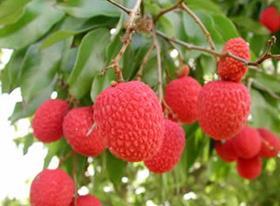
Scrimad, the Madagascar Company of Commerce, Representation & Investment, is one of the leaders in the production and export of Madagascan lychees, but chairman Simon Rakotondrahova warns that action is needed if a sizeable volume is not to continue going to waste or becoming lunch for the lemurs.
“Madagascar produces around 100,000 tonnes between November and January, but exports less than 20,000 tonnes,” he said. “Domestic consumption is less than 10,000 tonnes, so there is a big unused capacity. So much is wasted.”
The answer, he suggested, lies in a combination of processing and new markets. “Lychees have a very short shelf life, so processing into purees and pulp is important,” he said, “We are just getting started, but we will be ready by the end of the year. This requires an investment in facilities and machinery.”
Most important, however, is the search for new markets. “Lychees are becoming better and better known,” said Rakotondrahova, “and there are emerging markets in places like the Middle East. We can send to Hong Kong, but not yet direct to China. The main targets for us are India and Egypt. We are counter-seasonal to these countries, but perhaps more importantly, consumers there are already used to the product. New markets where you have to educate consumers are obviously more difficult.”
According to Rakotondrahova, the best way to penetrate new markets is through an association. “This is the only way to repeat the success we have seen in Europe,” he said. “In Madagascar, we produce more than we can commercialise, so there is big competition on the market and prices go down as a result. We therefore need to find the right balance between supply and demand and work together. This is the aim. It is important to be able to offer a fixed quantity throughout the season. We plan to do the same in all emerging markets.”